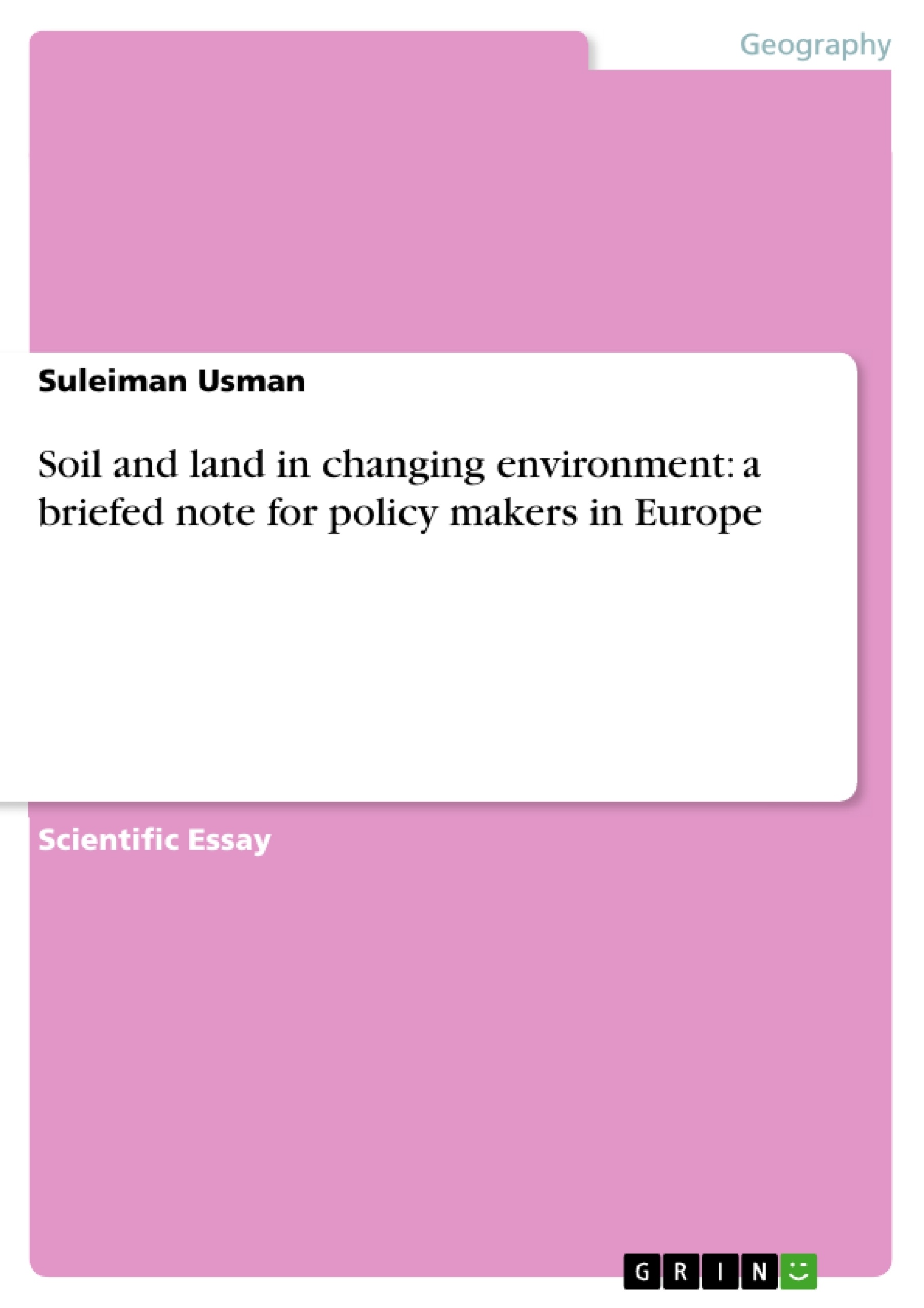Environmental problems such as soil erosion, loss of organic matter, compaction, salinisation, landslides, contamination and sealing are rapidly increasing in the whole of Europe. The major causes of these is seen to lies within the issues of climatic changes in relation to global warming, inappropriate land use and greenhouse emissions. The problems might leads to change in soil and land and also their natural surface nature. This change might also affect soil fertility and crop yield losses, property and flood damage, economic effects due to erosion-induced income, losses (e.g. tourism, land abandonment), removal, treatment and disposal of (contaminated) sediments down stream, infrastructure damage (roads and water supply) and organic mater decline. Use of integrated thinking, appropriate land use management and stable environmental policy would help to minimise or mitigate the mentioned problems in the Europe. Science and scientist will play important role in providing quantitative information that may help policy makers to achieve mitigations of environmental changes in sustainable manner.
INTRODUCTION
It is clear that environmental issues particularly land, soil, agriculture and water quality are becoming daily news in mainstream life. Globally, land degradation, soil erosion, pollution, desertification, greenhouse gas emission and soil fertility depletion have been also considered as the major threats to soil, environment, food security and natural resource conservation. Decline in factor productivity has put sustainability of agricultural production systems, soil management and human resource development at stake due to deterioration of global natural resources. In fact, the problem is seen to affect all part of human life particularly where agriculture and management resources for industrial productions is been considered as one of the main income for government and people. For this reason the present article focussed on soil and land management issues and aimed to address a balance between policy and science in the European geographical region. This is been consider as forward-looking to support the policy makers whose responsibility is to construct the most appropriate programme and to implement the policies correctly toward sustainability and development. The article was categorised into four main cross-points: (a) the changing environment, (b) the soil protection, (c) the water quality and (d) the atmospheric protection in European countries. Improving the awareness of the important and significant of these four points will help to improve the quality and safety of soil, water, agricultural produce, forestry, fishery and general future of global agricultural and natural resources. The information provided under the four points will also help to improve the scientific based-skill knowledge in the aspect of qualitative and quantitative sustainable ideals to policies makers for supporting and protecting environment at various levels of human needs.
Generally, due to pressure on soil, land and water from various human interactions, the main objective of this article was to provide a brief report on soil and land in changing environment in Europe with specific aims to:
a. address issues of soil protections and water quality
c. outline the impact of agricultural practices on water quality, soil and recommend some areas of best management practices to mitigate the impact
d. Explain the effect of greenhouse emission on land and and strategies for mitigation and
e. promote the sustainable management and soil protection
[...]
- Citar trabajo
- PhD Student Suleiman Usman (Autor), 2012, Soil and land in changing environment: a briefed note for policy makers in Europe, Múnich, GRIN Verlag, https://www.grin.com/document/203948




